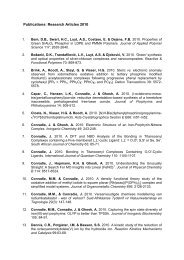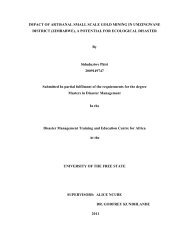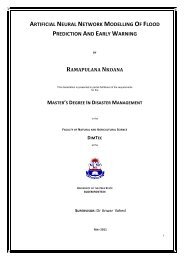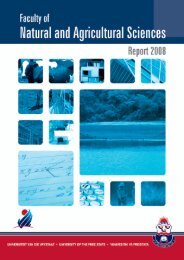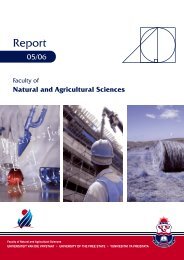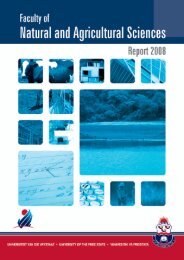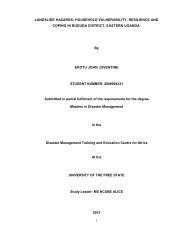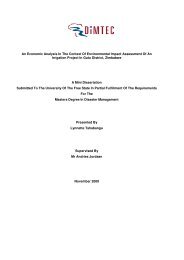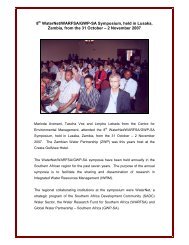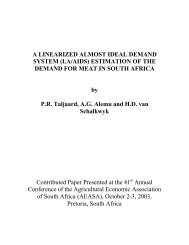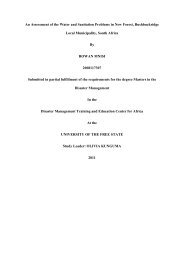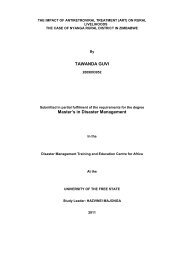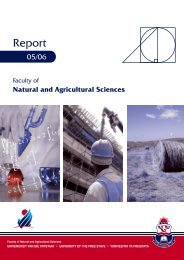D. Bhebhe - Faculty of Natural and Agricultural Sciences - University ...
D. Bhebhe - Faculty of Natural and Agricultural Sciences - University ...
D. Bhebhe - Faculty of Natural and Agricultural Sciences - University ...
Create successful ePaper yourself
Turn your PDF publications into a flip-book with our unique Google optimized e-Paper software.
2.17 Financial Benefits <strong>of</strong> Gold Panning<br />
The financial benefits <strong>of</strong> gold panning can be viewed from the perspective <strong>of</strong> the individual<br />
panner <strong>and</strong> is represented by gross average income. From the results presented earlier, the<br />
median income from gold panning in the week prior to the survey was $33 per panner for full<br />
time panner, estimated annual income was $1 680 based on finding the median yield every<br />
week. For part-time panners the estimated annual income over 27 weeks was $890<br />
The income estimates are based on the prices actually received by the panners for their gold,<br />
which was roughly 65% <strong>of</strong> the <strong>of</strong>ficial Reserve Bank price.<br />
2.18 Financial Costs to the gold panning activities<br />
The financial costs <strong>of</strong> any commercial mining activity are represented by the private marginal<br />
costs <strong>of</strong> extracting <strong>and</strong> marketing the ore. The costs should include all factors <strong>of</strong> production<br />
such as the cost <strong>of</strong> l<strong>and</strong> (purchasing or leasing), labour <strong>and</strong> capital. The survey did not<br />
directly ask panners about production costs but these can be estimated.<br />
The cost <strong>of</strong> l<strong>and</strong> to an individual panner is either zero (where mining is done illegal or on<br />
behalf <strong>of</strong> a claim holder), or the cost <strong>of</strong> the permit (where the panner is following the Mining<br />
Alluvial Gold, Public Streams 1991 Regulations). The regulations rural councils charge<br />
individuals an annual fee <strong>of</strong> $20,000 in return for the right to pan along a 50-meter stretch <strong>of</strong><br />
river. In this study, the costs associated with 1991 regulations are used as a proxy for l<strong>and</strong><br />
costs<br />
On considering the costs for the individual panner, this could be measured by the opportunity<br />
cost <strong>of</strong> his or her time in the best alternative occupation. If for example, a panner earns $50<br />
per day <strong>and</strong> the alternative is $75 per day, the opportunity cost to him is $25 per day. For the<br />
financial analysis, we assume no opportunity cost <strong>of</strong> labour to individual gold panners. It is<br />
very unlikely that panners count the cost <strong>of</strong> their time as a cost <strong>of</strong> production.<br />
Shava, 1991 noted that, capital costs are small for gold panning <strong>and</strong> may range from buying<br />
material for sluice boxes, building a small hut, buying shovels <strong>and</strong> picks, etc. We estimate the<br />
27



